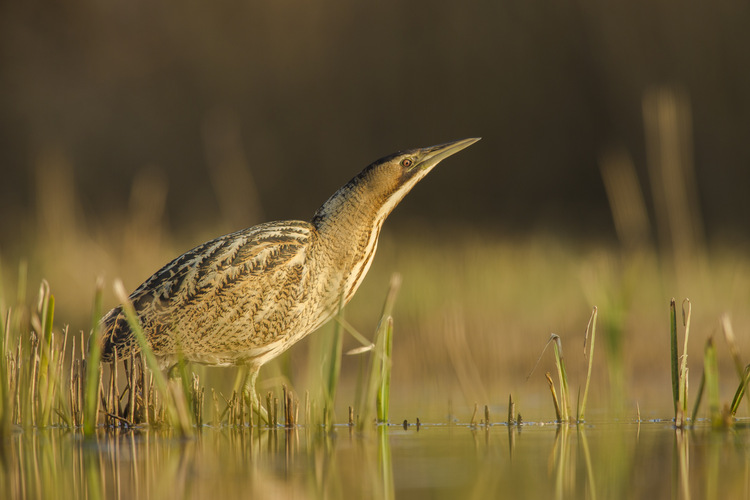
A RSPB survey reveals that the bittern, Britain’s loudest bird, is making a remarkable recovery in England and Wales
By
The shy and rare bittern, a stumpy, buff brown-coloured member of the heron family, is known for being the loudest bird in Britain thanks to the repetitive boom that males (known as booming males) make during the breeding season.
Living in reed beds, the bittern was once widespread in the UK, but due to habitat destruction, hunting, and persecution, it had been reduced to extinction by the 1870s. The bittern then made a triumphant return in the 1950s, with the population of booming males increasing to around 80 before declining again to just 11 by 1997. But over the past 25 years, the population has again started to increase steadily.
Although bitterns are large birds, they’re notoriously difficult to spot due to their shy nature and the dense reed beds that they hide away in. This means that in order to calculate a population size, the standard practice is to record the males booming mating call, which can be heard from 4.5 km away. Like a human voice, every male bittern has a different sounding boom, which allows ornithologists to easily count the number of males within a given area.
By employing this technique, a new survey by the RSPB has revealed that there are now 234 males across 11 sites in England and Wales (although they were once found in parts of Scotland and Northern Ireland, they haven’t yet re-established themselves there), which is a 24 per cent increase over the past five years. The main reason for this increase is because of the creation of new wetland habitats and reed beds for the birds. Even so, the bittern remains a rare bird in the UK and is listed as an amber species.
As RSPB senior conservation scientist Simon Wotton describes: ‘The success of this species is in no doubt thanks to conservation efforts by many dedicated organisations and landowners, including the volunteers who have helped to monitor Bittern populations over the years. It is brilliant to see the hard work of staff and volunteers in managing specialist habitats for bitterns paying off, and with many RSPB nature reserves now acting as a safe haven for this incredible species, spring really is the time to get out and try to hear their famous boom.’
Although this all sounds quite positive, the bittern still faces an uphill struggle in the UK due to sea level rises caused by climate change drowning low-lying coastal reed beds. For this reason, the conservation focus has been on inland reedbeds that are safe from rising sea levels.
If you want to hear the booming beat of a bitter, the following RSPB reserves offer the best chance:
- Leighton Moss, Lancashire
- Middleton Lakes, Staffordshire
- Old Moor, Yorkshire
- St Aidan’s Nature Park, Yorkshire
- Blacktoft Sands, Yorkshire
- Langford Lowfields, Nottinghamshire
- Ouse Fen, Cambridgeshire
- Minsmere, Suffolk
- Lakenheath Fen, Suffolk
- Avalon Marshes, Somerset
- Cors Ddyga, Anglesey
Related articles:




